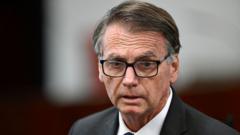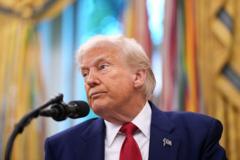The election will determine the new prime minister and the composition of parliament, with voters navigating a unique compulsory voting system and addressing pressing national issues.
Australia Prepares for 2023 Federal Election: Who Will Lead Next?

Australia Prepares for 2023 Federal Election: Who Will Lead Next?
Australians are gearing up for their upcoming federal election on May 3, 2023, marking a pivotal moment for the country's leadership.
In less than a month, Australians will cast their votes in a crucial federal election that could shape the nation’s political landscape. On May 3, 2023, voters will determine not just their next prime minister but also the overall structure of their national parliament.
Australia's electoral framework is distinctive, characterized by mandatory voting for citizens over the age of 18 and a preferential voting system. Nearly 18 million Australians are registered to participate, representing about 98% of eligible voters. Unlike the First Past the Post approach used in countries like the UK and US—where the candidate with the most votes wins—Australia’s system requires voters to rank candidates according to their preferences. If no candidate achieves more than 50% of the vote initially, the least popular candidates’ votes are redistributed until a majority is secured.
This election will see all 150 seats in the House of Representatives and 40 of the 76 Senate seats contested. Australia’s political sphere mainly features two dominant parties: the left-oriented Australian Labor Party and the conservative Liberal-National coalition. To establish a majority government, a party needs at least 76 seats. If they fail, there’s a possibility they will have to rely on the support of minor parties or independents—a trend that has been gaining traction in recent years, seen notably in the 2022 election where one-third of voters backed non-major party candidates.
Currently, the Labor Party holds the majority after a significant win in the 2022 election, possessing 78 seats while the coalition has 57. However, with the abolition of one House seat, Labor's majority is precarious: losing even two seats could change the dynamics in parliament. For the coalition to reclaim power, they would need to secure 19 additional seats.
Key figures in the race include incumbent Prime Minister Anthony Albanese of the Labor Party, who has been in office since the last election, and Peter Dutton, the leader of the Liberal-National coalition and challenger for the role. Albanese, a political veteran with nearly 30 years in parliament, faces scrutiny over his approaches to issues such as housing and social equality. Dutton, known for his strong conservative stance and experience in key ministerial roles, is campaigning for his first election as opposition leader after last year’s defeat.
Among the top priorities for voters this election are the rising cost of living and housing affordability. Inflation, though easing, has strained family budgets, increasing prices for essentials like food and utilities. The Albanese government has introduced measures aimed at providing relief, including medication subsidies and tax cuts. However, rising interest rates—13 hikes since May 2022—are amplifying financial pressure, especially for mortgage holders.
Results from the election are typically available on the same night; however, official confirmation from the Australian Electoral Commission can take longer, as they perform an indicative count throughout the day, with final declarations awaiting a high level of confidence in outcomes. Thus, the nation braces for an eventful election day, reflecting the urgent concerns of its citizens.
Australia's electoral framework is distinctive, characterized by mandatory voting for citizens over the age of 18 and a preferential voting system. Nearly 18 million Australians are registered to participate, representing about 98% of eligible voters. Unlike the First Past the Post approach used in countries like the UK and US—where the candidate with the most votes wins—Australia’s system requires voters to rank candidates according to their preferences. If no candidate achieves more than 50% of the vote initially, the least popular candidates’ votes are redistributed until a majority is secured.
This election will see all 150 seats in the House of Representatives and 40 of the 76 Senate seats contested. Australia’s political sphere mainly features two dominant parties: the left-oriented Australian Labor Party and the conservative Liberal-National coalition. To establish a majority government, a party needs at least 76 seats. If they fail, there’s a possibility they will have to rely on the support of minor parties or independents—a trend that has been gaining traction in recent years, seen notably in the 2022 election where one-third of voters backed non-major party candidates.
Currently, the Labor Party holds the majority after a significant win in the 2022 election, possessing 78 seats while the coalition has 57. However, with the abolition of one House seat, Labor's majority is precarious: losing even two seats could change the dynamics in parliament. For the coalition to reclaim power, they would need to secure 19 additional seats.
Key figures in the race include incumbent Prime Minister Anthony Albanese of the Labor Party, who has been in office since the last election, and Peter Dutton, the leader of the Liberal-National coalition and challenger for the role. Albanese, a political veteran with nearly 30 years in parliament, faces scrutiny over his approaches to issues such as housing and social equality. Dutton, known for his strong conservative stance and experience in key ministerial roles, is campaigning for his first election as opposition leader after last year’s defeat.
Among the top priorities for voters this election are the rising cost of living and housing affordability. Inflation, though easing, has strained family budgets, increasing prices for essentials like food and utilities. The Albanese government has introduced measures aimed at providing relief, including medication subsidies and tax cuts. However, rising interest rates—13 hikes since May 2022—are amplifying financial pressure, especially for mortgage holders.
Results from the election are typically available on the same night; however, official confirmation from the Australian Electoral Commission can take longer, as they perform an indicative count throughout the day, with final declarations awaiting a high level of confidence in outcomes. Thus, the nation braces for an eventful election day, reflecting the urgent concerns of its citizens.




















